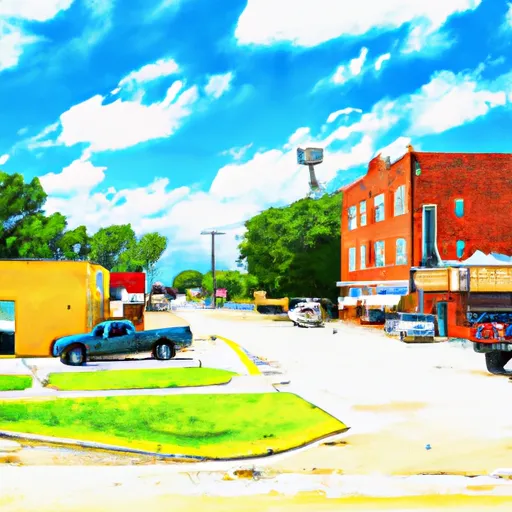-
 Snoflo Premium
Snoflo Premium
Get unlimited access to all our content
With no Ad interruptions! - Start Your Free Trial Login with existing account
Albert
Eden Index
Climate
8.3
•
Recreation
4.9
•
Community
0.9
•
Safeguard
5.2/10

Albert, Texas is a small unincorporated community located in Gillespie County. The climate in Albert is generally warm and humid, with hot summers and mild winters. The area receives an average of 30 inches of rainfall per year, which contributes to the hydrology constituents of the region. The Pedernales River runs nearby, providing opportunities for fishing, kayaking, and other water-related activities. There are also several parks and nature preserves in the area, including the Lyndon B. Johnson State Park and the Enchanted Rock State Natural Area. These parks offer hiking, camping, and other outdoor recreation opportunities. Overall, Albert offers a great escape for those looking to experience the natural beauty of Texas.
What is the Eden Index?
The Snoflo Eden Index serves as a comprehensive rating system for regions, evaluating their desirability through a holistic assessment of climate health, outdoor recreation opportunities, and natural disaster risk, acknowledging the profound impact of these factors on livability and well-being.
Climate Health Indicator (CHI): 8.3
Albert receives approximately
813mm of rain per year,
with humidity levels near 89%
and air temperatures averaging around
19°C.
Albert has a plant hardyness factor of
8, meaning
plants and agriculture in this region tend to thrive here all year round.
By considering the ideal temperature range, reliable water supplies, clean air, and stable seasonal rain or snowpacks, the Climate Health Indicator (CHI) underscores the significance of a healthy climate as the foundation for quality living.
A healthy climate is paramount for ensuring a high quality of life and livability in a region, fostering both physical well-being and environmental harmony. This can be characterized by ideal temperatures, reliable access to water supplies, clean air, and consistent seasonal rain or snowpacks.
Weather Forecast
Streamflow Conditions
Middle Colorado-Llano
Area Rivers
Middle Colorado-Llano
Snowpack Depths
Middle Colorado-Llano
Reservoir Storage Capacity
Middle Colorado-Llano
Groundwater Levels
Recreational Opportunity Index (ROI): 4.9
The Recreational Opportunity Index (ROI) recognizes the value of outdoor recreational options, such as parks, hiking trails, camping sites, and fishing spots, while acknowledging that climate plays a pivotal role in ensuring the comfort and consistency of these experiences.
Access to outdoor recreational opportunities, encompassing activities such as parks, hiking, camping, and fishing, is crucial for overall well-being, and the climate plays a pivotal role in enabling and enhancing these experiences, ensuring that individuals can engage in nature-based activities comfortably and consistently.
Camping Areas
| Campground | Campsites | Reservations | Toilets | Showers | Elevation |
|---|---|---|---|---|---|
| Enchanted Rock State Natural Area | 100 | 1,391 ft | |||
| Canyon of the Eagles Nature Park | 33 | 1,103 ft | |||
| Blanco State Park | 35 | 1,319 ft | |||
| Cedar Point Rec Area | None | 1,016 ft | |||
| Colorado Bend State Park | 35 | 1,284 ft | |||
| Joe Ragsdale RV Park | None | 1,194 ft | |||
| Lackland AFB Military | None | 734 ft | |||
| Badu Park | 15 | 1,011 ft | |||
| Black Rock Park | 36 | 1,034 ft | |||
| San Saba Golf RV Park | 30 | 1,179 ft |
Nearby Fishing
Nearby Ski Areas
Catastrophe Safeguard Index (CSI):
The Catastrophe Safeguard Index (CSI) recognizes that natural disaster risk, encompassing floods, fires, hurricanes, and tornadoes, can drastically affect safety and the overall appeal of an area.
The level of natural disaster risk in a region significantly affects safety and the overall livability, with climate change amplifying these risks by potentially increasing the frequency and intensity of events like floods, fires, hurricanes, and tornadoes, thereby posing substantial challenges to community resilience and well-being.
Community Resilience Indicator (CRI): 0.9
The Community Resilience Indicator (CRI) recognizes that education, healthcare, and socioeconomics are crucial to the well-being of a region. The CRI acknowledges the profound impact of these elements on residents' overall quality of life. By evaluating educational resources, healthcare accessibility, and economic inclusivity, the index captures the essential aspects that contribute to a thriving community, fostering resident satisfaction, equity, and social cohesion.

